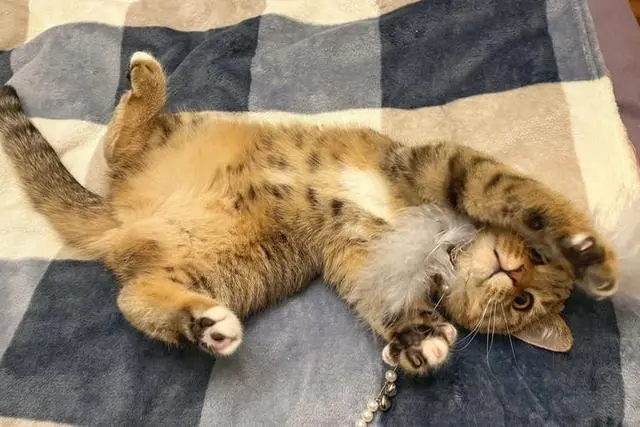Cats are fascinating creatures, often exhibiting behaviors that can leave their owners puzzled. One common question among cat owners is whether their feline companions can express remorse or apologize. This article will explore specific behaviors that indicate your cat is “saying sorry” and how to interpret these signals correctly.

Why Do Cats Display Apologetic Behavior?
Understanding the reasons behind your cat’s behaviors can help you interpret their actions better. Cats, like many animals, communicate primarily through body language and subtle actions. When a cat feels they have done something wrong, their instinct is to show a form of submission or apology to maintain their bond with you.
Common Apologetic Behaviors in Cats
- Slow Blinking
One of the most heartwarming ways a cat shows affection and remorse is through slow blinking. When your cat looks at you and slowly closes their eyes, it can be a sign of trust and love, often occurring after a misbehavior. - Kneading
If your cat starts kneading you with their paws, it’s usually a sign of comfort and affection. This behavior may intensify after they’ve done something that they perceive as wrong. It’s their way of seeking forgiveness and reassurance. - Lowered Head and Ears
A cat that approaches you with a lowered head and flattened ears might be expressing guilt. This submissive posture shows that they recognize their behavior wasn’t acceptable, and they are seeking your approval. - Seeking Out Attention
After a minor transgression, such as knocking something off a table, your cat may come to you for attention. This behavior can be seen as a way to make amends, signaling that they want to reconnect and show that they still love you. - Licking You
Cats groom each other as a sign of affection. If your cat starts licking you, it might be their way of apologizing and showing that they still care despite their earlier misdeed.
How to Respond to Your Cat’s Apologies
Understanding how to respond to your cat’s apologetic behavior can help strengthen your bond:
- Provide Reassurance
When your cat exhibits any of the behaviors mentioned above, gently pet them and offer soothing words. This reassures them that they are still loved and that you’ve forgiven them. - Avoid Punishment
Cats do not respond well to punishment. Instead of scolding, focus on redirecting their behavior and reinforcing positive actions. - Engage in Play
After a misbehavior, engaging your cat in a play session can help reestablish your connection and allow them to express themselves in a more positive manner. - Monitor Their Behavior
Keep an eye on any recurring behaviors. If certain actions lead to negative consequences, consider making adjustments to your environment to prevent further incidents.
Misinterpretations of Cat Behavior
Many cat owners may misinterpret their pets’ behaviors. Here are a few common misconceptions:
- Hiding Means Guilt
While some cats may hide after a misbehavior, it can also indicate stress or anxiety. It’s essential to assess the overall context of the situation. - Purring Always Means Contentment
Cats purr for various reasons, including stress or discomfort. If your cat is purring after a misdeed, it could be a self-soothing mechanism rather than an indication of happiness. - Excessive Grooming is Always Positive
While grooming can signify affection, excessive grooming may indicate anxiety or distress, especially after a perceived wrongdoing.
Creating a Positive Environment for Your Cat
Fostering a positive relationship with your cat will reduce instances of unwanted behaviors. Here are some tips:
- Interactive Playtime
Dedicate time each day for interactive play sessions. This keeps your cat stimulated and helps prevent boredom-related misbehavior. - Provide Appropriate Outlets
Ensure your cat has access to toys, scratching posts, and climbing structures. This allows them to express natural behaviors without resorting to destructive actions. - Regular Routine
Cats thrive on routine. Keeping a consistent schedule for feeding, playtime, and grooming can reduce anxiety and help them feel secure.
Conclusion
Understanding your cat’s behavior and recognizing when they are apologizing can enhance your relationship. By responding with patience and affection, you can help your cat feel secure and loved, fostering a deeper bond. Cats may not express remorse in the same way humans do, but their behaviors can convey a lot about their feelings and intentions.

Comments (0)